We explain what the Mesozoic Era was, how it is divided and its climate. Also, what are its general characteristics, flora and fauna.
What was the Mesozoic Era?
The Mesozoic Era (also called the Mesozoic, or formerly the Secondary Era), is one of the three Eras that make up the Phanerozoic eon of the geological time scale , along with the Paleozoic (earlier) and Cenozoic (later) Era. Its duration was 186 million years.Its name means "intermediate life" (from the Greek meso , "between", and zoe , "life" or "animal") , since it is found between the "ancient life" (from the Greek palaio , "old") and the " new life ”(from the Greek kainos ,“ new ”). It had its beginning approximately 251 million years ago, and its culmination 66 million years ago.
In the Mesozoic Era, the world was under the rule of dinosaurs , which is why, zoologically , it is known as "The Age of Dinosaurs . " The cycads dominated the plant kingdom , which is why it is known botanically as "The era of cycads."
Was earlier
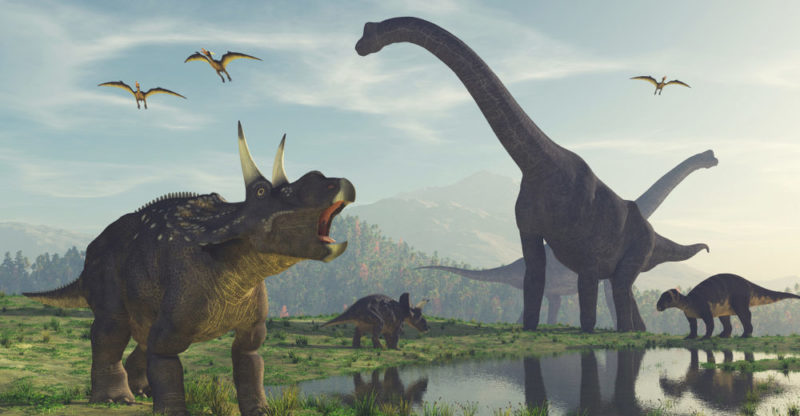 Also known as the Primary Era, the Paleozoic began with the disintegration of the supercontinent Pannotia and culminated in the formation of the supercontinent Pangea.
Also known as the Primary Era, the Paleozoic began with the disintegration of the supercontinent Pannotia and culminated in the formation of the supercontinent Pangea.It lasted more than 290 million years. Throughout this time, life on the planet evolved .
They appeared the animals marine shell - but also more complex shapes such as large reptiles and relatively modern plants, such as conifers.
The Paleozoic is divided into the Cambrian, Ordovician, Silurian, Devonian, Carboniferous, and Permian periods.
Mesozoic Era Division
The Mesozoic is divided into three great periods, each one divided into Epochs and Ages, as follows:
- Triassic period . It begins 252.2 million years ago more or less, and ends approximately 208.5 million years ago. It is divided into Lower or Early Triassic, Middle Triassic, and Upper or Late Triassic. It encompasses the Induense, Olenekian, Anisian, Ladinian, Carnian, Norian, and Rhaetian ages.
- Jurassic period . It begins approximately 201.3 million years ago and ends about 152.1 million years ago . It is divided into Lower or Early Jurassic, Middle Jurassic, and Upper or Late Jurassic. It encompasses the Hettangian, Sinemurian, Pliensbachian, Toarcian, Aalenian, Bajocian, Bathonian, Callovian, Oxfordian, Kimmeridgian, and Tithonian ages.
- Cretaceous period . It begins about 145 million years ago and ends about 66 million years ago. It is divided into two: Lower or Early Cretaceous and Upper or Late Cretaceous, covering the Berriasian, Valanginian, Hauterivian, Barremian, Aptian, Albian, Cenomanian, Turonian, Coniacian, Santonian, Campanian and Maastrichtian ages.
Triassic period
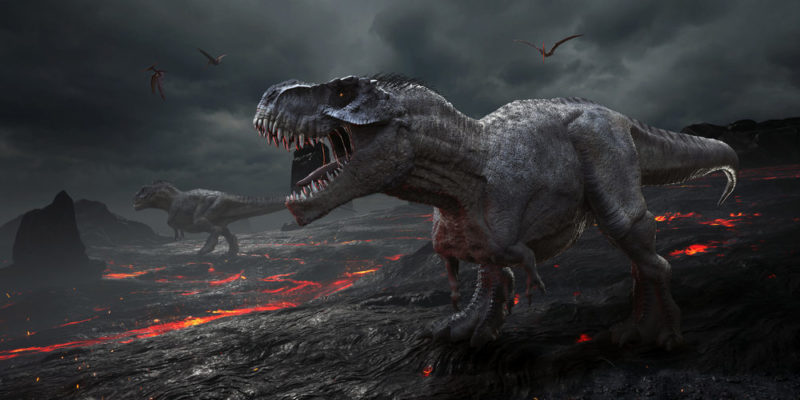 In the Triassic , the supercontinent of Pangea was formed . The first dinosaurs appeared on earth, generally bipedal and carnivorous , as well as the first mammals (from the mammalian reptiles).
In the Triassic , the supercontinent of Pangea was formed . The first dinosaurs appeared on earth, generally bipedal and carnivorous , as well as the first mammals (from the mammalian reptiles).This period begins and ends with two mass extinction events : the Permian-Triassic and the Triassic-Jurassic, the former being the most catastrophic in the history of the entire planet.
Jurassic period
The Jurassic was the period when dinosaurs proliferated and reigned , which is why it is perhaps the most famous of the Mesozoic periods. In addition, the fracturing of the Pangea Supercontinent began.The large reptiles proliferated and diversified . Thus, they conquered the land, the sea and even the air . Some of the bulkiest dinosaurs discovered are from this period of hot and humid climate.
Cretaceous period
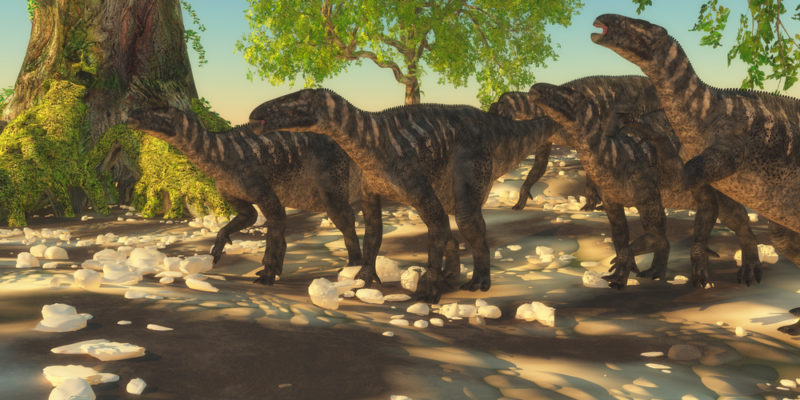 The Cretaceous is a particularly long period, in which dinosaurs further diversified and reached the most complex forms in their evolutionary history. The first birds appeared and mammals diversified , playing a minor role since the Triassic.
The Cretaceous is a particularly long period, in which dinosaurs further diversified and reached the most complex forms in their evolutionary history. The first birds appeared and mammals diversified , playing a minor role since the Triassic.This period ended in the so-called K-Pg Event , which is suspected to have consisted of the fall of a meteorite in the Yucatan Peninsula. The event caused the extinction of dinosaurs and many other species, and paved the way for mammals as the new masters of the planet.
Geology of the Mesozoic Era
From a tectonic point of view, the Mesozoic was quite mild in terms of continental convergence and mountain formation , at least compared to the Paleozoic. The supercontinent of Pangea was formed at the beginning and dissociated as the ages passed, almost reaching its current form.This allowed the creation of new oceans , as well as the flooding of many plains that are currently arid, such as in the United States. In addition, it promoted a climatic distribution more similar to the modern one. During this period the Andes mountain range was formed , as well as the Rocky Mountains of North America.
Climate of the Mesozoic Era
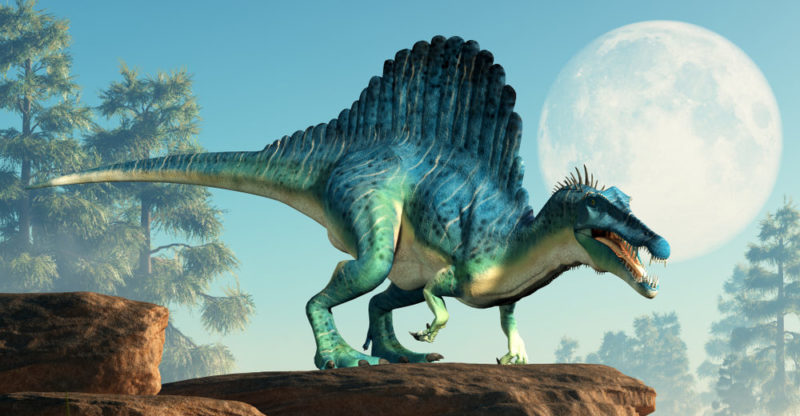 The climate during the Mesozoic varied considerably. It began with a dry and warm trend during the Triassic, inherited from the previous Era, which generated deserts and arid climates in the interior of Pangea, away from the calming presence of the sea.
The climate during the Mesozoic varied considerably. It began with a dry and warm trend during the Triassic, inherited from the previous Era, which generated deserts and arid climates in the interior of Pangea, away from the calming presence of the sea.The expansion of the seabed that occurred in the Jurassic allowed the sea level to rise, flooding new continental regions and flooding coastal areas. As a consequence, the world climate cooled considerably, tending to be humid and warm, almost tropical .
Finally, during the Cretaceous, the climate is less known. It is assumed that temperatures continued to rise , reaching even 10 ° C higher than today, which would have turned the equatorial areas into arid regions, despite their proximity to the sea, but there is not much evidence in this regard.
Fauna of the Mesozoic Era
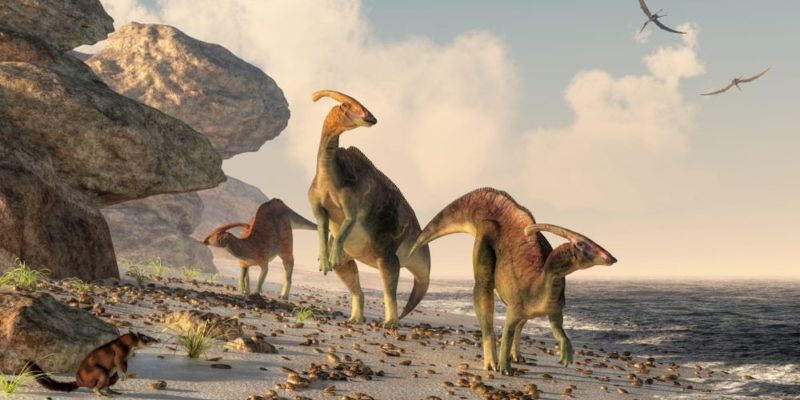 Since the Mesozoic began after the most violent mass extinction the planet has ever known, the Permian-Triassic Mass Extinction, the Mesozoic Era had plenty of room for new species, both animals and plants . This space was quickly used by reptiles and later by the dinosaurs in which they evolved.
Since the Mesozoic began after the most violent mass extinction the planet has ever known, the Permian-Triassic Mass Extinction, the Mesozoic Era had plenty of room for new species, both animals and plants . This space was quickly used by reptiles and later by the dinosaurs in which they evolved.Dinosaurs were the predominant life form throughout the Mesozoic, both on land , in the air and in the sea: carnivores, herbivores, flying, long-necked or fast raptors, and a long etcetera that we know quite well today.
Furthermore, evidence shows that huge arthropod life forms , such as insects and arachnids, existed . Taking advantage of the extremely high levels of oxygen in the atmosphere (almost 35%, compared to the current 21%) they grew to levels today considered gigantic.
Towards the end of the Age, mammals began to proliferate , although always in very minor proportions compared to dinosaurs. Another important phenomenon has to do with the appearance of birds , or at least the first flying feathered dinosaurs , such as the famous Archeopteryx .
The end of the Era takes place when the K-Pg Mass Extinction Event occurs , today understood as the fall of a meteor of colossal proportions in Yucatan, Mexico , forever ending the reign of non-avian dinosaurs and many other prehistoric species.
Flora of the Mesozoic Era
The Mesozoic began after an unprecedented plant expansion, which occurred during the Carboniferous and Permian. Huge jungles , forests and jungles existed throughout the Pangea continent. This continued throughout the Mesozoic.The great evolutionary event in plant matter occurred towards the end of the Cretaceous: angiosperms emerged . With them the flowers appeared as a new botanical form.
This had an important impact on the evolution of plants and insects (it can be said that they coevolved), although cycads continued to be the predominant plant form until the end of the Era.
Later era: the Cenozoic
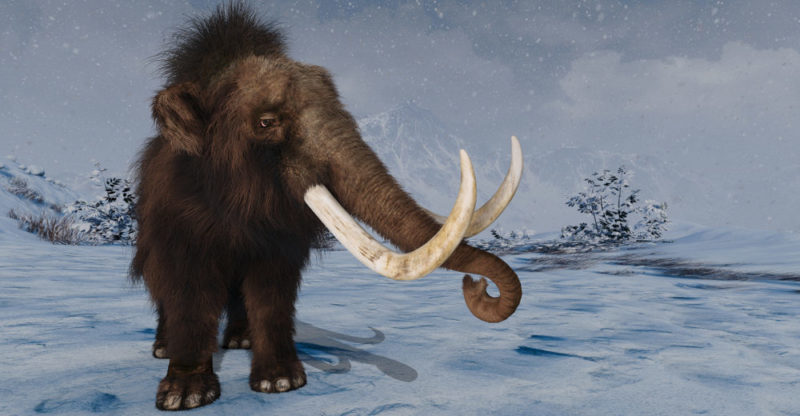 After the end of the Cretaceous, the Mesozoic Era closes and the Cenozoic, formerly known as Tertiary, opens. It is a period in which new forms of life appear and proliferate on the planet, taking advantage of the void left by the dinosaurs that ruled most of the hunting niches for millions of years.
After the end of the Cretaceous, the Mesozoic Era closes and the Cenozoic, formerly known as Tertiary, opens. It is a period in which new forms of life appear and proliferate on the planet, taking advantage of the void left by the dinosaurs that ruled most of the hunting niches for millions of years.There is also a period of significant cooling of the planet that led to ice ages and the dominance of mammals as the new successful way of life. The Cenozoic is divided into the Paleogene, Neogene, and Quaternary periods.
The above content published at Collaborative Research Group is for informational and educational purposes only and has been developed by referring reliable sources and recommendations from technology experts. We do not have any contact with official entities nor do we intend to replace the information that they emit.
Veronica is a culture reporter at Collaborative Research Group, where she writes about food, fitness, weird stuff on the internet, and, well, just about anything else. She has also covered technology news and has a penchant for smartphone stories. .
Leave a reply
Your email address will not be published. Required fields are marked *Recent post

Sport: What Is It, Types, Risks, Features, Characteristics and Examples
September 23, 2021

Dogs: Emergence, Features, Characteristics, Feeding and Breeds
September 24, 2021

Story: Definition, Elements, Structure, Features and Characteristics
September 24, 2021

Essay: Definition, Structure, Features, Characteristics, How to Do It
September 24, 2021
